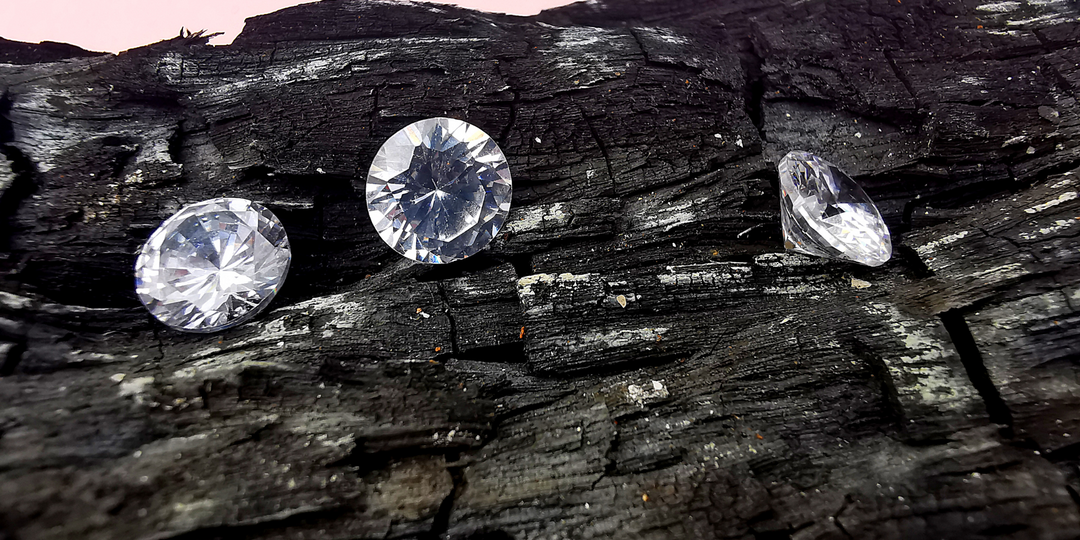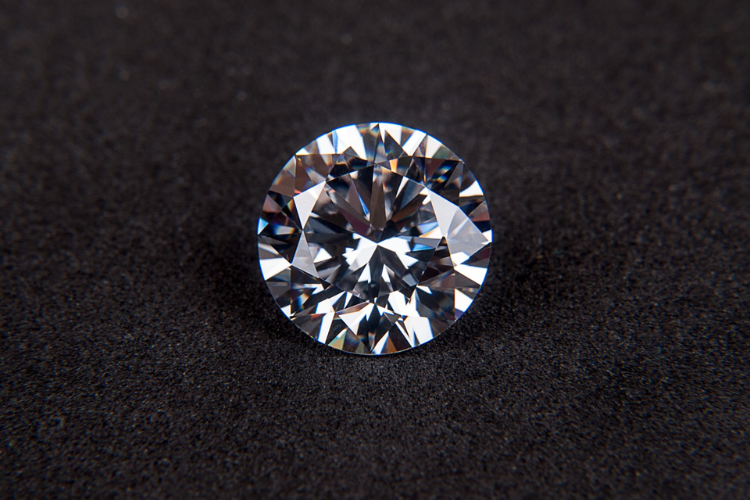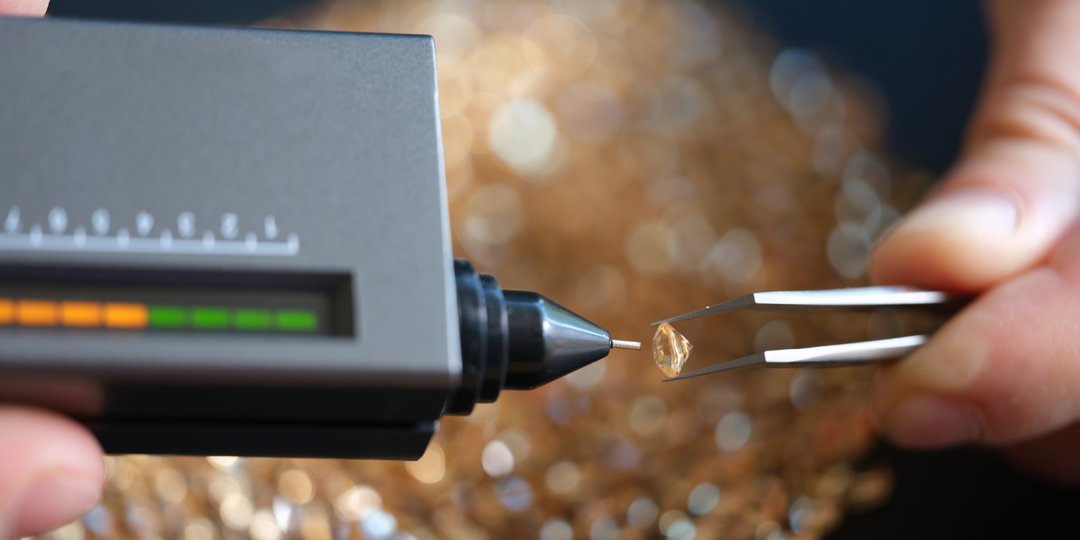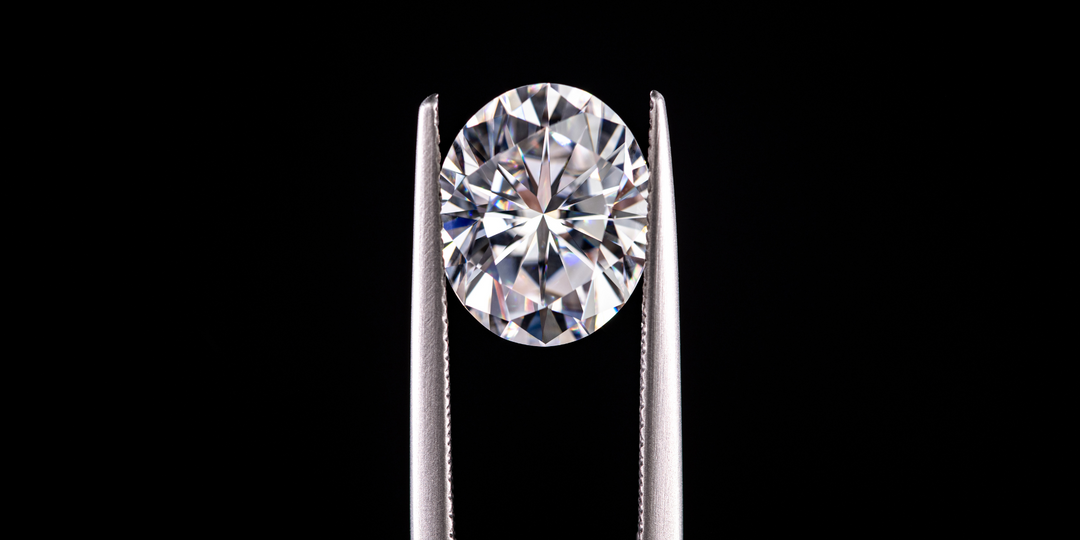Solitaire Lab Grown Diamond Ring: A Complete Guide
Are you on the lookout for a stunning engagement ring that's eco-friendly and easy on the wallet? Well, you’re in the right place! A solitaire lab-grown diamond ring might just be your perfect match. This guide will help you get to know these beautiful gems, from what they are to how to choose the one that fits your style and budget just right.
What Is a Solitaire Diamond Ring?
A solitaire ring is so classic! It’s a single stone (usually a diamond) on a simple band. The word “solitaire” comes from the Latin “solus” meaning alone or sole, because the stone is the sole focus. This design lets the stone be the star and maximizes its sparkle and brilliance. And the simplicity of the solitaire setting makes it super versatile and fits with any style and occasion.
But solitaire settings aren’t just for engagement rings! They’re also used in other jewelry like solitaire necklaces and earrings. These pieces feature a single stone, often hanging from a chain or set in a simple stud, so the stone can be the star without any fuss.
If we look back in time, solitaire rings have come a long way since ancient Roman times when they used uncut and unpolished stones. Over the years the design has evolved into the sleek and modern style we love today.
The solitaire ring became super popular in the 19th century, especially with the Tiffany setting in 1886 which raised the diamond above the band to maximize its brilliance. Since then it’s been the symbol of forever love and commitment, a solitaire engagement ring.
The Advantages of Choosing a Lab Grown Diamond
Affordability
One of the biggest benefits of a lab grown diamond is the cost. Lab grown diamonds are 60-90% cheaper than mined diamonds. So for example a natural 2-carat round-cut diamond with great color and clarity will cost you around $13,000 to $14,000. A lab grown diamond of the same specs will cost you around $1,000!
This price difference means you can get a larger or higher quality diamond within the same budget so it’s a great option for those who want to get the most value without sacrificing beauty.
Ethical Sourcing
Lab grown diamonds are made in a controlled environment so you can skip the ethical worries that come with mined diamonds. Mined diamonds often have connections to conflict zones and unfair labor practices which is pretty scary. On the other hand, lab grown diamonds don’t have those issues so you can have peace of mind knowing your purchase isn’t contributing to human rights abuses or harming the environment.
Quality
Lab grown diamonds are the same as natural diamonds when it comes to their composition, physical properties, and how they look. They have fewer inclusions and defects so they often look brighter and clearer. Plus you can get lab grown diamonds in all sorts of colors and sizes so you have tons of options to match your style!
Choosing a lab grown diamond not only supports ethical and sustainable practices but also you get a high-quality gemstone at a lower price. So it’s a great option for those who want both beauty and responsibility in their jewelry purchase.
Types of Solitaire Ring Settings
Solitaire ring settings are such a timeless and elegant way to showcase a stunning gemstone! Let’s dive into some of the most popular types:
1. Prong Setting: This is probably the most common choice! The 4-Prong setting has four little claws that hold the diamond securely while letting in tons of light to make it sparkle beautifully. If you want extra security, the 6 Prong setting is your friend—it uses six prongs to keep the diamond safe and gives it a slightly bolder look, all while still allowing light to shine through. You can find variations like rounded, clawed, pointed, and V-shaped prongs.
2. Bezel Setting: Here, the gemstone is surrounded by a metal rim that holds it snugly in place. This setting is fantastic for protection and gives the ring a sleek, modern vibe. If you lead an active lifestyle, bezel settings are perfect since they shield the stone from damage.
3. Rubover Setting: Similar to the bezel, this one also surrounds the diamond with metal but tends to have a softer, rounded edge, providing a gentler appearance while keeping the diamond safe.
4. Cathedral Setting: This design mimics the beautiful arches of a cathedral, with the band curving up to meet the gemstone. It elevates the stone, making it look larger and more eye-catching. It’s a lovely blend of elegance and vintage charm!
5. Tension Setting: In this cool setting, the gemstone is held in place by the pressure of the metal band, making it look like it’s floating! This contemporary design allows maximum light exposure and a unique, stunning appearance.
6. Split Shank Setting: The band splits into two or more strands as it approaches the gemstone, giving the ring a distinctive and stylish look. It adds a touch of detail while keeping the focus on the central stone.
7. Knife Edge Setting: This one features a band with a sharp, raised edge down the center, giving the ring a sleek and modern feel. Plus, it can make the gemstone look even bigger and more prominent!
Each of these settings brings its flair to highlighting the beauty of a solitaire gemstone, so you can pick one that matches your style. Whether you love the classic look of a prong setting or the sleek feel of a tension setting, there’s a solitaire ring for everyone!
Choosing the Right Diamond for Your Solitaire Ring
Cut
The cut of a diamond is super important for making it shine bright! An excellent or ideal cut will let the diamond reflect light beautifully, giving it that intense sparkle we all love. So, when you're picking out a solitaire ring, make sure to focus on the cut first—it's a key factor in how stunning the diamond will look.
Carat
Carat weight is all about the size of the diamond. Sure, bigger diamonds can cost more, but it's all about finding the right balance between size and quality. Think about your budget and what you want to help you decide on the perfect carat size. Remember, a well-cut diamond can look bigger than its actual carat weight because of how brilliantly it sparkles!
Clarity
Clarity is about any inclusions or blemishes in the diamond. Look for eye-clean clarity grades like VS1 or VS2, where you won’t see any imperfections with the naked eye. This way, you can get a gorgeous diamond without breaking the bank.
Color
Diamonds are graded on color from D (colorless) to J (near colorless). For a solitaire ring, you'll want a diamond that looks white in your setting. Diamonds in the D-F range are colorless and super sought after, while G-J diamonds are near-colorless and a bit kinder on your wallet.
Tips for Choosing a Solitaire Diamond:
- Set a Budget: Figure out how much you want to spend and prioritize the 4Cs (cut, carat, clarity, color) based on that.
- Consider the Setting: The metal of the ring can change how the diamond looks. For example, a yellow gold setting can make a slightly tinted diamond look whiter.
- Shape Matters: Pick a diamond shape that reflects your style. Round diamonds are timeless, but fancy shapes like oval, pear, or emerald can add a special flair.
- Certification: Make sure your diamond comes with a certification from a well-known gem lab, like GIA or IGI, to confirm its quality.
- Personal Preference: At the end of the day, go for a diamond that speaks to your personal style. You want to feel confident and happy with your choice!
By keeping these tips in mind, you'll be able to find a diamond that fits your style and budget while still being high quality. You’ll end up with a beautiful and timeless solitaire ring!
Customizing Your Solitaire Lab Grown Diamond Ring
One of the best things about a solitaire lab grown diamond ring is you can make it yours! Start with the metal of your band—white gold, yellow gold, rose gold or platinum; each one has its feel.
Consider adding a personal touch like engraving a sweet message inside the band. Some jewelers even let you customize the setting so you can design a ring that’s one of a kind! CaratBee is awesome for this, they have tons of options to help you create a ring that fits your style.
Don’t forget to think about the diamond shape too! While round brilliant cut diamonds are super popular, shapes like princess, oval, and pear can make your ring stand out.
Customization lets your ring reflect your personality and tell your love story. It’s not just about the diamond; it’s about creating a piece of jewelry that’s yours!
Certification and Quality Assurance
When you’re buying a lab grown diamond it’s super important to make sure it’s certified. Trustworthy organizations like the Gemological Institute of America (GIA) and the International Gemological Institute (IGI) offer certifications for these diamonds. These certificates break down the diamond’s features—cut, carat, clarity, and color—so you can feel good about your purchase.
But remember, quality assurance goes beyond certification. Look for a jeweler who’s known for their workmanship and great customer service. Check for warranties and return policies to protect your investment. A good jeweler will also offer cleaning and maintenance services for your ring.
In the end, certification and quality assurance give you peace of mind, so your solitaire lab grown diamond ring is as special as your love story!
Caring for Your Solitaire Lab Grown Diamond Ring
Taking care of your solitaire engagement ring is super important if you want to keep it sparkling and beautiful! Here are some easy tips for cleaning and maintaining your ring, plus a quick look at both DIY and professional cleaning methods:
DIY Cleaning Methods
1. Warm Soapy Water:
- Grab a bowl, fill it with warm water, and add a few drops of mild dish soap.
- Let your ring soak for about 20-40 minutes.
- Give it a gentle scrub with a soft toothbrush, paying extra attention to the diamond and setting.
- Rinse it under warm running water and pat it dry with a lint-free cloth.
2. Baking Soda Paste:
- Mix some baking soda with water to make a paste.
- Apply the paste to your ring and scrub gently with a soft toothbrush.
- Rinse thoroughly and dry it off with a soft cloth.
3. Club Soda:
- Soak your ring in fizzy club soda for about 30 minutes.
- Use a toothbrush to brush away any dirt that comes loose.
Professional Cleaning Methods
1. Jeweler Cleaning:
- It’s a good idea to see a professional jeweler for a cleaning at least twice a year.
- They use ultrasonic cleaners and steam cleaners that really do a great job of getting rid of dirt and grime.
2. Inspection and Maintenance:
- Regular check-ups can help spot any loose settings or potential damage before it becomes a bigger issue.
Tips for Daily Maintenance
- Avoid Harsh Chemicals: Make sure to take off your ring when you’re using cleaning products or putting on lotions and perfumes.
- Store Properly: Keep your ring in a soft pouch or jewelry box to avoid scratches.
- Regular Checks: Take a moment to inspect your ring regularly for any signs of damage or loose stones.
With these tips, your ring will stay looking its best for years to come!
Conclusion
A lab grown solitaire diamond ring is not just a beautiful choice; it’s also an eco-friendly way to get a timeless piece of jewelry! This guide has everything you need to know, from the basics to picking the perfect diamond and customizing your engagement ring styles.
Just remember, the secret to a stunning solitaire ring is all about finding the right balance between quality, style, and budget. With the tips here, you'll be on your way to discovering a ring that truly reflects your unique love story.
Are you ready to start your search? Check out our collection of diamond engagement rings today and find the solitaire lab grown diamond ring of your dreams!












